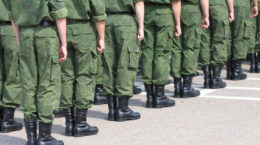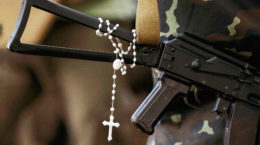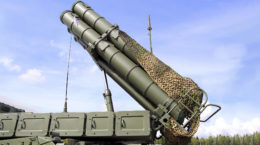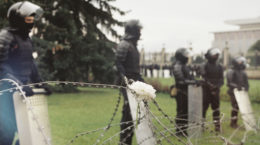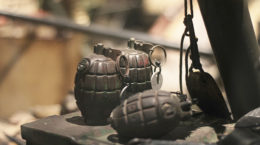An issue of creating the so-called “people’s militia” is being discussed again in Belarus today. Back on April 16, 2023, the Belarusian regime introduced the long-announced draft bill “About people’s militia” in the House of Representatives which is totally controlled by Lukashenka. For some reason, the text of the draft law was published on the National Legal Internet Portal only on May 23, 2023. When the consideration of the bill is going take place is not clear; at least, that document is not present in the public agenda of the current session of the illegitimate parliament (but it can appear there any moment). However, at least now Our House is able to analyze the said document.
What does the draft bill say?
As the definition of the subject suggests, the “people’s militia” in Belarus are armed formations constituting of civilians (obviously, fierce supporters of Lukashenka) who wish to enforce martial law in the territory of their population centre or district. The people’s militia will be established by an order of Aliaksandr Lukashenka in case martial law is imposed in the country, and dismissed with the lifting of martial law and, again, by the order of Lukashenka.
The main task of the people’s militia is to provide help to local interior bodies (the police) to “ensure the order and protect property from various attacks”. Also, the militia can be attracted “for other tasks on the provision of martial law”. The bill says directly the following: “People’s militia units are formed on the grounds of decisions passed by local executive and administrative bodies, local councils of defense”. That means that what in fact is formed are groups of armed civilians controlled by local administrations. In case the central authority “flinches” at least a little (which is more than probable in a situation of war), we will get Belarus torn apart by badly controlled units of armed people.
Let’s continue with the definitions of the bill. A people’s militia unit is an armed formation created within the framework of an administrative and territorial unit (population centre or district). A volunteer of the people’s militia is a citizen who permanently or predominantly lives in the specific territory and expresses desire to become a militiaman, passes qualification for that (including qualification by the KGB on the loyalty to the Belarusian regime) and gets enlisted to a militia unit. Every such paramilitary unit is going to have their own insignia, established by local authorities.
The quantity of units and their size will depend on the number of the available volunteers and on the type of tasks they will have to perform. The units will be deployed within the borders of their population centres or districts, and will carry out tasks in the same borders. Nevertheless, if needed, they can act together with the neighboring armed units.
The militia units are going to be financed and supported by local budgets, “voluntary” donations and other legal sources. Local authorities undertake to provide the necessary premises, territories and all material resources for the militia. Except for, obviously, weapons and ammunition. Those are to be provided by the Ministry of Defense in the quantity determined by the General Staff.
The general management of the militia in the limits of the borders of each specific administrative and territorial unit shall be carried out by the local council of defense. That is, a council created by local power bodies in case martial law is imposed. Formally, the councils of defense fall under the chain of command of the Security Council and interact with the General Staff, while the direct leadership is imposed on heads of local executive committees. Such councils must include the head of the local executive committee and the deputies, the military commissioner, heads of the interior bodies, the KGB and the Ministry of Emergency Situations. The rest of the members shall be appointed by the head of the executive committee.
However, it is obvious that in the situation of a real war, most probably the normal interaction with the center will soon be disturbed. What should be done then? According to the draft bill, councils of defense ensure martial law on the ground managing and administrating, in fact, a specific population centre, district, region in all the main aspects. The militia units on the ground performing the main task shall be commanded by the local police.
Local executive committees (councils of defense) shall choose militiamen out of volunteers. Local conscription and enlistment offices shall also participate in the process: they are going to approve the candidates, keep records of volunteers and train them together with the state bodies and the police. Still before the martial law, i.e., in peace time, state bodies can carry out activities to train for the formation of the armed units. The order of such trainings, as well as the rules of formation of such units, enrollment in the militia and release from it shall be determined by the Council of Ministers. Every militia unit shall have a commander and a deputy (deputies). They shall be chosen out of volunteers; candidates shall be approved by the local leadership of the police and of the KGB.
The militiamen shall live at home, not in the barracks. Joining the militia does not entail dismissal from work. A volunteer only has to inform the employer about that, and the employer shall be obliged to retain the employee’s job, position and medium wage, at the same time releasing him from work to participate in the activities of the militia. Service in the militia does not exempt from military service. If a militiaman is drafted for mobilization, he shall be sent to military units.
If we take a glance at the list of duties of a militiaman, we will see that armed units of people are supposed to help local authorities in their multiple chores and troubles evoked by a martial law. Also, about 80-90% of the militia’s duties coincide with the duties of territorial defense units, which are, by the way, being formed on similar principals, and which have already been created and are acting in Belarus. The reasons why militarized structures, which duplicate each other and differ in subordination only, are being formed, are totally unclear.
Unexpectedly, the rights of the militia units turned out to be extremely vast. Thus, according to the document, while fulfilling their tasks, the militiamen have a right:
- to use physical force and weapons (in the limits established by the law for the military attracted to ensure the martial law). In practice this means to kill people without investigation and trial;
- to detain criminals and offenders with the aim to transfer them to the police or other force authorities;
- to demand from citizens to respect the rules and restrictions of martial law, to demand the cessation of violations or actions impeding the militia to perform their tasks;
- to perform limitations of movement, searches and detention of vehicles;
- to organize admission of transport to restricted objects;
- to carry out control of documents and personal searches of citizens and their belongings. In practice, in Belarus it means a right to marauding and seizure of money and valuables without investigation and trial;
- to seize belongings of citizens during a search, if they can be a weapon or an object of an offense, for further transfer to the police. Similarly, thus, a right to commit marauding is ensured;
- to search homes and other property of citizens, objects of organizations, also during persecution of people suspected of committing a crime, for further transfer to the police. Analogically, in practice that ensures the right to commit robbery and marauding in flats and houses;
- to use someone else’s vehicles to transport the wounded, victims in different circumstances, people in need of urgent medical help to medical institutions. In practice this means that any car they like will be taken from its owner;
If needed, the militia may be granted other rights in the framework of the legislation.
It seems like it is an eloquent illustration of a famous saying of Mao Tse Tung: “Power comes from the barrel of a gun”.
Short and foggy history of the people’s militia in Belarus
The first time the new armed formations were mentioned was in May, 2022: the Defense Minister, Viktor Khrenin, said then that he was given a task to create people’s militia in Belarus: “The Commander-in-Chief has set a task to create, among others, a people’s militia in our country. As we see, this issue is indeed very needed. Most importantly, we have both people and weapons to do that. Thanks to that, the number of the defenders of the motherland will multiply several times, and everyone will see that they’d better not dare to come to Belarus”.
Several days later, on June 3, 2022, Aliaksandr Lukashenka also mentioned his idea of creating the people’s militia. He said that the experience of Ukraine had made him think about that: “I thought that just in case, we need to have that people’s militia, a group of people, under every village council. There will be few of them. Maybe, 50 people. But they must also have their own weapons stored somewhere. We are calling them up for training, they take their own machine guns (mainly, a machine gun, a grenade launcher, a pistol) to defend their home. Yet, there should be no uncontrolled distribution of arms”.
Still before signing the draft bill “About people’s militia”, the Belarusian regime started launching “pilot projects”. Thus, the first experiment took place in the autumn of 2022 on the basis of Lobzhany Village Council in Klimavichy district of Mogilev region. In April, 2023, similar trainings took place in Barysaw district, two districts of Grodno region, and in May – in Volkovysk District. Another people’s militia unit was created under Glivinsky Village Council, with 25 volunteers, four others were in the reserves. Yet, those structures have no legal status at all.
What for?
The Belarusian regime is taking the path of many other dictatorial regimes that mass-produced force structures and stimulated competition between them, as they were scared of people in uniforms and did not trust them, but had no one else to rely on. This is why, besides the territorial defense, also the people’s militia for the local power bodies is being formed in advance.
Belarus is rapidly moving towards military dictatorship.





